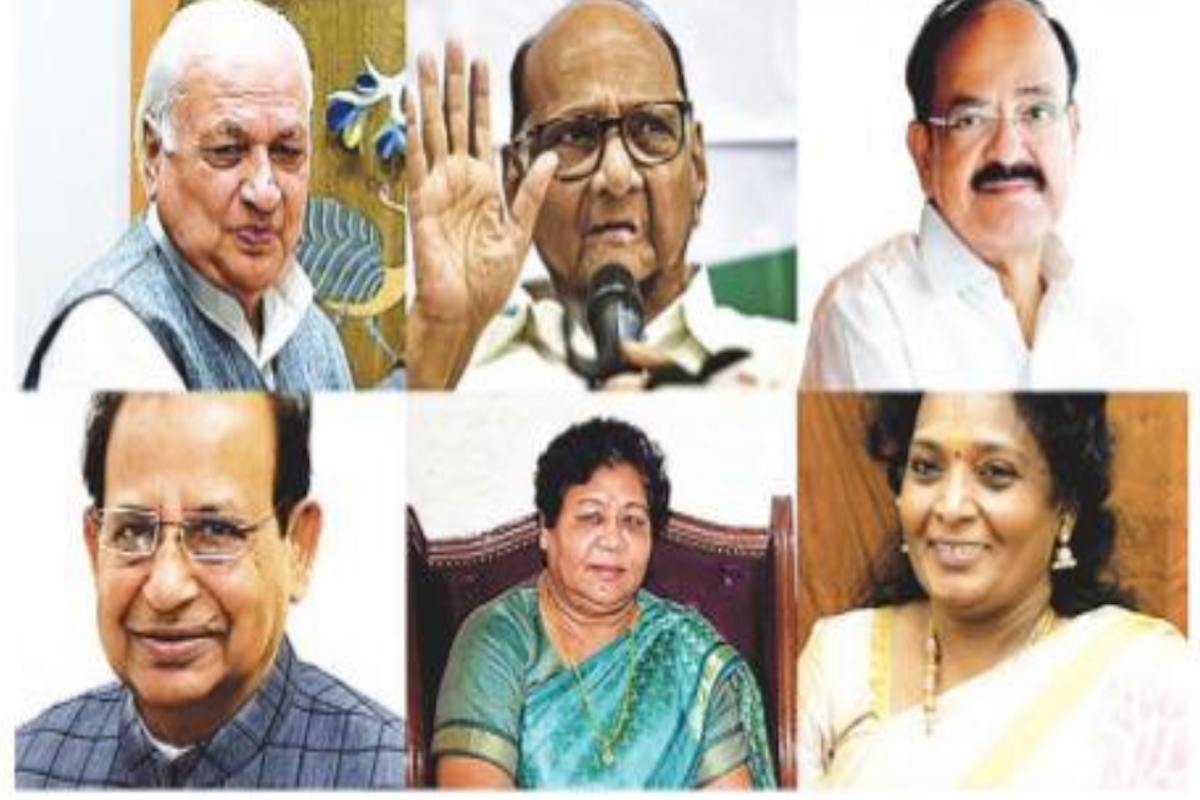‘Kartam Bhugtam’ screened at Rashtrapati Bhawan
Exclusive screenings of psychological thriller "Kartam Bhugtam" held at Rashtrapati Bhawan and Films Division Auditorium for Ministry of I&B officials, following its May 17 release.
The electoral college consisting of 776 members of Parliament (543 from Lok Sabha, 233 from Rajya Sabha), plus 4,809 members of state legislative assemblies, will elect the next President on July 18.

In the years since India became a republic, presidential polls have witnessed close contests, surprises, and upsets. But mostly it has been a formality, as the ruling dispensation emerges victorious, and the Opposition puts up a candidate for a symbolic fight. This time too, there is likely to be a contest.
The electoral college consisting of 776 members of Parliament (543 from Lok Sabha, 233 from Rajya Sabha), plus 4,809 members of state legislative assemblies, will elect the next President on July 18.
Advertisement
Presidential polls have been interesting every time. From the first president, Dr Rajendra Prasad, to incumbent Ram Nath Kovind, the sixth President, Neelam Sanjiva Reddy, was the only unopposed independent who won the presidential race in 1977.
Advertisement
Ironically, a decade earlier, in one of the most controversial presidential polls, the Congress Party’s official candidate, Sanjiva Reddy had lost to independent V.V. Giri, then supported by Prime Minister Indira Gandhi. Giri’s win boosted Indira’s leadership. Before and after that, the official candidates carried the day.
Rashtrapathi Bhavan comes into focus after every general election if no party gets a majority. After satisfying himself with a claimant’s stability, the President appoints the prime minister. In tricky situations, each President handled problematic issues in different ways. Presidents like R.Venkataraman, Dr Shankar Dayal Sharma, and K.R.Narayanan took sensitive and sometimes controversial decisions. Sharma gave BJP leader Atal Bihari Vaj- payee, the leader of the single largest party, a chance to form a government in 1996 that lasted 13 days. The government fell because it could not mobilise support from other parties for a majority. When Indira Gandhi was assassinated in 1984, President Giani Zail Singh installed her son, Rajiv Gandhi, in
strange and tragic circumstances.
The relationship between prime ministers and presidents was also sometimes strained. Dr Rajendra Prasad’s letters speak of the strain between him and Jawaharlal Nehru on the Hindu code bill. Giani Zail Singh believed the armed forces would sur- round the Rashtrapathi Bhavan in a coup. Sanjiva Reddy and Indira Gandhi could not tolerate each other. P.V. Narasimha Rao and Sharma were also not on the best of terms.
The Presidential polls have witnessed some surprising candidates. In 2002, Vajpayee sprung a surprise by choosing the ‘Missile man’ A P J Abdul Kalam as the presidential candidate. The two major parties – Congress and the BJP – came together for the first time
and supported his candidature. In 2007, Congress chose the first woman president, Pratibha Patil to challenge the NDA’s Bhairon Singh Shekhawat. It was a close fight. In 2012, Congress leader Pranab Mukherjee got the support of the left and other opposition parties to win the polls. Ramnath Kovind was a complete surprise, and he is finishing his term without any controversy.
The NDA and the Opposition are each searchings for the right candidate. The Modi government is comfortable even as it is short of the required majority mark (less than 20,000 votes.) To fill this gap, the BJP is trying to get support from neutral parties like the BJD, YSRCP, and the AIADMK.
What kind of President do we need? Most presidents had been men of stature who also won the highest civilian title, the Bharat Ratna and including S Radhakrishnan (1954), Dr Rajendra Prasad (1962), Dr Zakir Hussain (1963), V.V. Giri (1975) and Dr Abdul Kalam (1997).
Secondly, most communities have had a chance to occupy Rashtrapati Bhavan. K.R Narayanan was the first Dalit President in 1997, Abdul Kalam the first scientist (2002), and Pratibha Patil, the first woman President in 2007.
Three Muslims – Dr Zakir Hussain, Fakhruddin Ali Ahmed and Dr Abdul Kalam – and one Sikh, Giani Zail Singh, have been Presidents. The list also includes Justice Mohammed Hidayatullah, who was acting President when Dr Zakir Husain died in office in 1969.
The only two prominent groups not represented since Independence have been OBCs and tribals. They, too, should be given a chance. Probably, the ruling dispensation might field a candidate from either community.
Thirdly, the person should not be a rubber stamp like Fakhruddin Ali Ahmed was perceived to be. Presidents like K.R.Narayanan, Pranab Mukherjee and Venkataraman had been rule-book presidents, and assertive.
Above all, the incoming President should be a person with a clean image, apolitical, modern in outlook, and non-controversial.
In the next few days, those in the fray will be known. Prime Minister Narendra Modi keeps his cards close to his chest. The Opposition is yet to arrive at a consensus candidate.
Modi is reaching out to the Opposition, which will go a long way toward avoiding a symbolic contest. In these polarised times, a widely respected person and a consensus candidate would be ideal. After all, as the country’s highest constitutional functionary, the President is also the guardian of the Constitution.
Advertisement